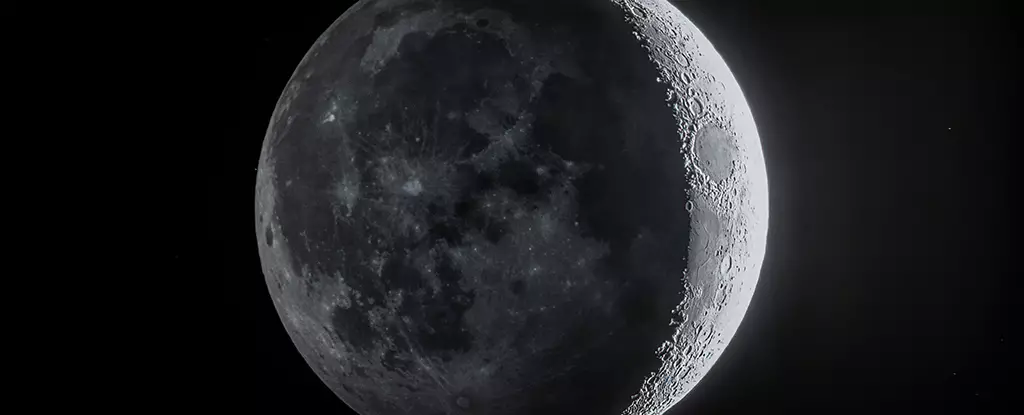A recent study has shed new light on the origin of ice on the Moon. While scientists have known for some time that there is ice present on the lunar surface, the source of this water has been unclear. However, researchers now suggest that waves of electrons, originating from both the Earth and the Sun, may be playing a role in the formation of frozen water on the Moon.
As the Moon passes through Earth’s magnetotail, waves of electrons hit its surface. Earth’s magnetotail is created as our planet moves through space, leaving behind a trail of highly charged electrons and ions. These particles are pulled from Earth’s atmosphere and also from solar wind radiation from the Sun. In previous studies, scientists have investigated the potential influence of Earth’s magnetosphere on the formation of lunar water. The magnetosphere is the protective magnetic field that shields Earth from the Sun’s solar wind, and its interactions with the Moon could provide insights into the formation processes of lunar surface water.
While previous studies have pointed to hydrogen ions from solar winds as the source of lunar water, this recent research suggests that electrons may also be involved. When high-energy electrons react with the lunar soil, they release trapped hydrogen, which can then form water. This finding challenges the belief that water formation on the Moon would significantly decrease inside the magnetotail, where solar wind protons are scarce. The presence of water formation even within the magnetotail suggests the existence of other mechanisms at play.
Further investigation and experiments on the lunar surface are necessary to conclusively determine the origins of the Moon’s water. Scientists are intrigued by the possibility that the Moon’s water may have multiple sources and formation processes. The study’s lead researcher, planetary scientist Shuai Li, highlights the significance of these findings in highlighting the interconnectedness between Earth and its Moon. “Altogether, this finding and my previous findings of rusty lunar poles indicate that the mother Earth is strongly tied with its Moon in many unrecognized aspects,” says Li.
Waves of electrons originating from Earth and the Sun may be contributing to the formation of ice on the Moon. This research challenges previous assumptions about the role of solar wind protons and highlights the potential influence of high-energy electrons. With further exploration and experimentation, scientists hope to unravel the mystery of lunar water and gain a deeper understanding of the complex relationship between Earth and its natural satellite.



Leave a Reply